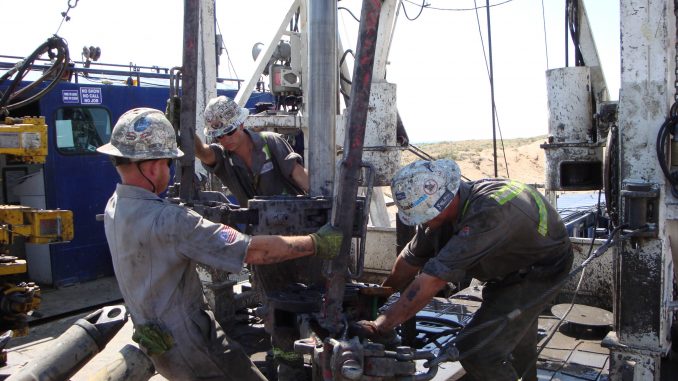
North Dakota To Give More Government Grants For Select Businesses
The North Dakota Department of Commerce will be leading a Special Business Briefing call Thursday, July 9, at 11 a.m. (CST) introducing the new Economic Resiliency Grant (ERG) available to North Dakota businesses, as approved by the Budget Section at its June 25 meeting.
The purpose of the ERG is to support investments in business facilities, systems, equipment or supplies to reduce the spread of infection and inspire consumer confidence. To support this purpose, qualifying North Dakota businesses and nonprofit applicants may apply for funding up to $50,000 for qualifying project costs.
Businesses that have the proper relationships and connections could be eligible for multiple programs and rounds of North Dakota and Federal Government money distributed and vetted through ND banks. For example, a ND company could receive Paycheck Protection Program (PPP) money, CARES Act well plug-in money and the North Dakota Commerce Department Grant.
Plus there are other specific monies and grants for agricultural endeavors, airports, arts, education and many other areas of commerce.
North Dakota has the highest approval rate for government assistance in the nation, despite not being one of the states “hard hit” by COVID Shutdown.
The North Dakota Department of Commerce has partnered with the Greater North Dakota Chamber of Commerce for this project. To receive call-in information, attendees must register as a non-member of the Greater North Dakota Chamber of Commerce. A confirmation email with call specifics will be sent to the email provided upon completion of registration and prior to the call. Questions may be asked in advance and during the live presentation. These questions will inform future training sessions.
Recordings of the previous Business Briefings can be found here.
Those unable to attend the call can receive updates from the briefing and recordings by following @CommerceND on Facebook and Twitter, and Dept. of Commerce on LinkedIn.
The Federal SBA Paycheck Protection Program was also extended to August 8. To apply for the PPP program, click here.
The North Dakota Department of Mineral Resources is utilizing CARES Act money for shut in well assistance. For more info on that program click here.
North Dakota as Regulatory Tough As California
William Prentice, Meridian Energy Group, gives an update on the Davis Refinery, the first greenfield refinery to be built in the United States in over 40 years, coming to the Bakken oil fields in Belfield, ND. Prentice discusses the past 18-24 months and the legal issues Meridian has encountered from political activists and the state of North Dakota.
In another example of state marketing meeting the realm of reality, Prentice found North Dakota not to be as business friendly as they have advertised over the past decade.
“It was a very intense process. And not occasional either, it was a week-by-week intensive review and design progress, interaction with the agency and of coarse consideration to all the public comments. Which there wasn’t a single one that we didn’t respond to,” Prentice said. “People think that somehow in state like North Dakota it’s going to be a simpler thing. I’ve been involved in energy projects all over the world. California, in the United States is considered the toughest and I would say that what North Dakota put us through is every bit as tough as what you would face in California.”
Record Production in 2019 Despite Lower Rigs
The number of U.S. oil and natural gas wells drilled each month per active rig has decreased since the peak in 1986 of 3.6 wells per rig per month. In 2019, an average rig drilled 1.5 wells per month. By drastically increasing the horizontal length of wells, producers have increased production despite using fewer rigs and drilling fewer wells.
Horizontal wells in the United States averaged about 10,000 feet of lateral length in the early 2000s but averaged 18,000 feet in 2019. Because horizontal wells now account for a larger share of new wells, the average linear footage per well increased from 6,000 feet to 15,000 feet during the same period.
The increased productivity of wells with longer horizontal lengths has more than offset the effects of rigs drilling fewer wells. Horizontal wells have more wellbore—the hole that forms the well—in contact with the producing formation, increasing the amount of crude oil or natural gas that can be recovered compared with a vertical well. The average rig was drilled 18,000 feet to 27,000 feet per month in 2019, almost twice as far as the active rigs in the early 2000s.
Horizontally drilled wells have become especially prevalent in shale and tight formations and have risen from about 2% of total wells drilled in 1990 to more than 75% in 2019. The number of new vertical wells drilled has decreased since its recent peak in 2008.
Horizontal wells have become the predominant way of drilling oil and natural gas wells in the United States, first outnumbering vertical and directional wells combined in 2015. In 2019, 75% of newly drilled wells were horizontal, and they averaged 18,000 foot wellbores compared with directional wells, which averaged 10,000 feet, and vertical wells, which averaged 4,500 feet.
The report did not discuss increases in energy innovation and artificial intelligence.
The Crude Life Podcast can be heard every Monday through Thursday with a Week in Review on Friday.
Spread the word. Support the industry. Share the energy.

